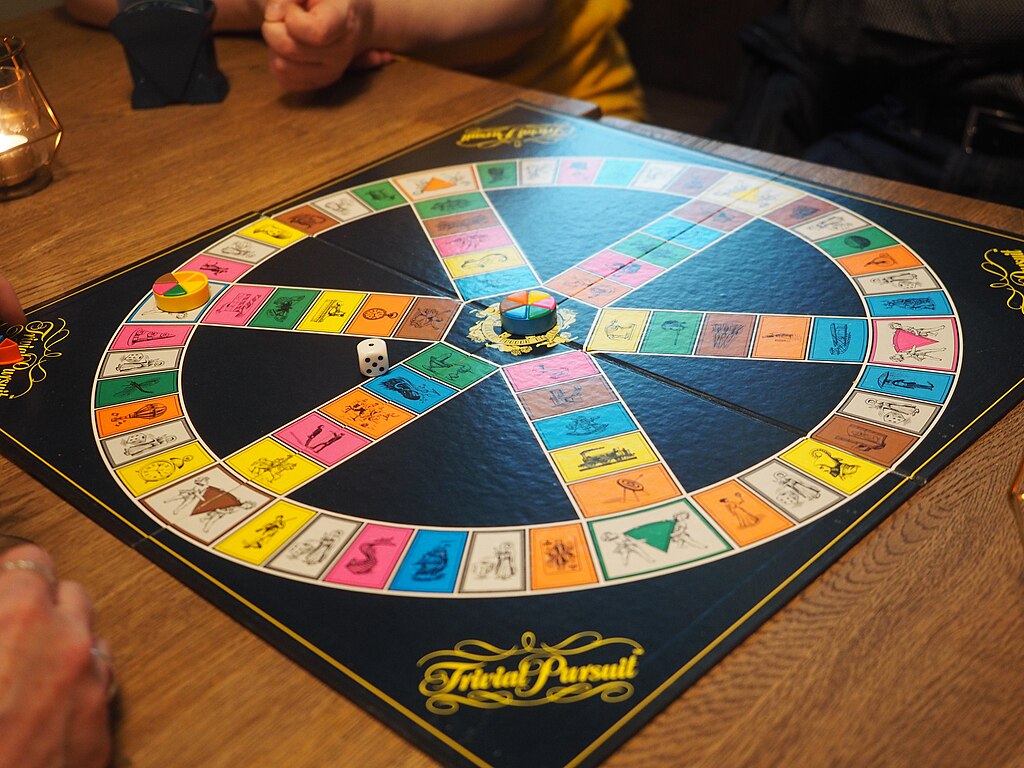Browse "Culture"
-
Article
Plank House
Historically, plank houses were structures built by various Indigenous peoples on the Northwest Coast of Canada, such as the Coast Salish, Kwakwaka’wakw, Nuu-chah-nulth, Nuxalk, Haida, Tsimshian, Gitxsan and Nisga'a. Plank houses varied in size and design, depending on the community. Plank houses still exist in some communities and are used mainly for community and ceremonial purposes. (See also Architectural History of Indigenous Peoples in Canada.)
"https://d2ttikhf7xbzbs.cloudfront.net/PlankHouse/SalishPlankHouse1907.jpg" // resources/views/front/categories/view.blade.php
https://d2ttikhf7xbzbs.cloudfront.net/PlankHouse/SalishPlankHouse1907.jpg
-
Article
Sheila Na Geira
According to legend, Sheila Na Geira (also spelled NaGeira and Nagira) was an Irish aristocrat or princess who, 300 or 400 years ago, while travelling between France and Ireland, was captured by a Dutch warship and then rescued by British privateers. She fell in love and was married to one of the privateers, Lieutenant Gilbert Pike. They settled at western Conception Bay. By the early 20th century, the legend was being told as part of Newfoundland’s oral tradition, and has since been popularized by poems, novels, scholarly articles and several plays.
"https://d2ttikhf7xbzbs.cloudfront.net/dreamstime_resize_33120989-2.jpg" // resources/views/front/categories/view.blade.php
https://d2ttikhf7xbzbs.cloudfront.net/dreamstime_resize_33120989-2.jpg
-
Article
"Jack Was Every Inch a Sailor"
"Jack Was Every Inch a Sailor." A loose retelling of the biblical Jonah story with a Newfoundland fisherman as the hero, this folksong seems to have been adapted from the New York music-hall song "Every Inch a Sailor."
"https://d2ttikhf7xbzbs.cloudfront.net/media/media/18604b5a-1f8f-4620-a727-9fe10fc19100.jpg" // resources/views/front/categories/view.blade.php
https://d2ttikhf7xbzbs.cloudfront.net/media/media/18604b5a-1f8f-4620-a727-9fe10fc19100.jpg
-
Article
"She's Like the Swallow"
"She's Like the Swallow." Distinctive Newfoundland variant of a large family of songs about unhappy love. Both Maud Karpeles (1930) and Kenneth Peacock (1960) collected it, and its beautiful tune has made it popular with many singers and choirs.
"https://development.thecanadianencyclopedia.ca/images/tce_placeholder.jpg?v=e9dca980c9bdb3aa11e832e7ea94f5d9" // resources/views/front/categories/view.blade.php
https://development.thecanadianencyclopedia.ca/images/tce_placeholder.jpg?v=e9dca980c9bdb3aa11e832e7ea94f5d9
-
Article
"Squid Jiggin' Ground"
This account of hijinks on the squid-fishing grounds is one of Newfoundland's best-known songs.
"https://development.thecanadianencyclopedia.ca/images/tce_placeholder.jpg?v=e9dca980c9bdb3aa11e832e7ea94f5d9" // resources/views/front/categories/view.blade.php
https://development.thecanadianencyclopedia.ca/images/tce_placeholder.jpg?v=e9dca980c9bdb3aa11e832e7ea94f5d9
-
Article
"The Anti-Confederation Song"
"The Anti-Confederation Song." This folksong originated around the time of the heated 1869 election in which Newfoundland was to decide whether or not to join the newly formed Dominion of Canada.
"https://development.thecanadianencyclopedia.ca/images/tce_placeholder.jpg?v=e9dca980c9bdb3aa11e832e7ea94f5d9" // resources/views/front/categories/view.blade.php
https://development.thecanadianencyclopedia.ca/images/tce_placeholder.jpg?v=e9dca980c9bdb3aa11e832e7ea94f5d9
-
Article
Saint Patrick’s Basilica
Saint Patrick’s Basilica is a minor basilica located in Montreal. It was constructed between 1843–47 as a parish church for Montreal’s growing Irish Catholic population (see Irish Canadians; Catholicism in Canada). The church was elevated to the status of a minor basilica in 1989. In addition to playing a significant religious and cultural role for the city of Montreal’s Irish community, Saint Patrick’s Basilica is recognized as the mother church for English-speaking Catholics in the city (see Canadian English; Languages in use in Canada).
"https://d2ttikhf7xbzbs.cloudfront.net/stpatricksbasilica/stpatrickschurchbynotman-son.jpg" // resources/views/front/categories/view.blade.php
https://d2ttikhf7xbzbs.cloudfront.net/stpatricksbasilica/stpatrickschurchbynotman-son.jpg
-
Article
"Song for the Mira"
“Song for the Mira” is a contemporary folk song in the Celtic style, written in 1973 by Allister MacGillivray. Its lyrics speak of a longing for, and eventual return to, the serenity of the Mira River region of Cape Breton, Nova Scotia. Brought to international attention by Anne Murray and covered more than 300 times, the song has become a standard in the Celtic repertoire and something of an anthem in Nova Scotia.
"https://development.thecanadianencyclopedia.ca/images/tce_placeholder.jpg?v=e9dca980c9bdb3aa11e832e7ea94f5d9" // resources/views/front/categories/view.blade.php
https://development.thecanadianencyclopedia.ca/images/tce_placeholder.jpg?v=e9dca980c9bdb3aa11e832e7ea94f5d9
-
Article
The Body Politic
The Body Politic was an influential Toronto-based monthly newspaper. Published from 1971 until 1987, it was the leading organ of Canada’s gay liberation and lesbian feminist movements. Read by gay activists around the world, the Body Politic challenged sexual orthodoxies, documented community resistance, and celebrated queer history and culture. It reported incidents of discrimination, police harassment and media homophobia, as well as activist efforts to pressure governments to change discriminatory laws. Complete issues of the newspaper formed the basis of the ArQuives, now one of the largest independent LGBTQ2 archives in the world.
"https://d2ttikhf7xbzbs.cloudfront.net/media/media/BodyPoliticTweetOnly.jpg" // resources/views/front/categories/view.blade.php
https://d2ttikhf7xbzbs.cloudfront.net/media/media/BodyPoliticTweetOnly.jpg
-
Article
The Fifth Estate
The Fifth Estate is Canada’s leading investigative journalism program. Modelled after CBS’s 60 Minutes, it debuted on the CBC in September 1975. It continues to be a flagship series for the public broadcaster. Hosts have included Adrienne Clarkson, Linden MacIntyre, Anna Maria Tremonti, Hana Gartner, Gillian Findlay and Bob McKeown. The show has won 52 Gemini Awards, more than 15 Canadian Screen Awards, two Michener Awards, two International Emmy Awards, a Peabody Award and an Academy Award for Best Feature Documentary.
"https://d2ttikhf7xbzbs.cloudfront.net/The_Fifth_Estate_TV_Series_title_card.png" // resources/views/front/categories/view.blade.php
https://d2ttikhf7xbzbs.cloudfront.net/The_Fifth_Estate_TV_Series_title_card.png
-
Article
The Nature of Things
The Nature of Things is television’s longest-running science series. It debuted on CBC on 6 November 1960. Originally a half-hour program that demonstrated scientific concepts, it evolved into an hour-long documentary during renowned scientist David Suzuki’s tenure as host (1979–2023). The groundbreaking program was among the first to present scientific findings on subjects such as HIV/AIDS and climate change. Over the course of more than 60 seasons and over 900 episodes, The Nature of Things has been seen in more than 80 countries. It has received 17 Gemini Awards and seven Canadian Screen Awards.
"https://d2ttikhf7xbzbs.cloudfront.net/media/media/d020d683-5c80-4b9d-9cd1-fa1f47cca874.jpg" // resources/views/front/categories/view.blade.php
https://d2ttikhf7xbzbs.cloudfront.net/media/media/d020d683-5c80-4b9d-9cd1-fa1f47cca874.jpg
-
Article
Early Inuit (Thule) Winter House
The early Inuit (Thule) were an Indigenous people who began to occupy the Arctic, from Alaska to Greenland, around 1000 CE. In the winter, the early Inuit used a house built partially into the ground to keep them warm for long periods of time. One striking feature of this structure was the roof, which was sometimes made of whalebone. (See also Architectural History of Indigenous Peoples in Canada.)
"https://d2ttikhf7xbzbs.cloudfront.net/ThuleHouse.jpg" // resources/views/front/categories/view.blade.php
https://d2ttikhf7xbzbs.cloudfront.net/ThuleHouse.jpg
-
Article
Trivial Pursuit
Trivial Pursuit is a board game that was invented by Canadians Chris Haney and Scott Abbott in December 1979. The game quickly became a massive international success and a defining pop culture artifact of the 1980s. It ushered in a new wave of board game popularity and was called “the biggest phenomenon in game history” by Time Magazine. First introduced in Canada in 1981 and in the United States in 1982, the game had sold more than 20 million copies by 1984. Total sales are estimated to have exceeded $1 billion and more than 100 million copies worldwide. The game is named after a common term for a frivolous activity (like a board game), which also literally describes the nature of the game (players answer trivia questions in pursuit of the most correct answers). Trivial Pursuit has been translated into multiple languages and re-issued in numerous editions.
"https://d2ttikhf7xbzbs.cloudfront.net/Trivial_Pursuit_at_Pyynikin_Taproom.jpg" // resources/views/front/categories/view.blade.php
https://d2ttikhf7xbzbs.cloudfront.net/Trivial_Pursuit_at_Pyynikin_Taproom.jpg
-
Article
Turtle Island (Plain-Language Summary)
Turtle Island is another name for North America. The origin of the name comes from the Algonquian-and-Iroquoian-speaking peoples. They are from the Northeastern part of North America. The stories are about a turtle that carries the world on its back. It is a symbol for life, the earth, and Indigenous identity. It also shows a deep appreciation for nature. This article is a plain-language summary of Turtle Island. If you are interested in reading about this topic in more depth, please see our full-length entry, Turtle Island.
"https://d2ttikhf7xbzbs.cloudfront.net/media/new_article_images/dreamstime_xxl_54953777.jpg" // resources/views/front/categories/view.blade.php
https://d2ttikhf7xbzbs.cloudfront.net/media/new_article_images/dreamstime_xxl_54953777.jpg
-
Article
TVO
TVO (formerly TVOntario; also stylized in lowercase as tvo) is Ontario’s English-language public educational television broadcaster. Founded in September 1970, its flagship station, CICA-DT (channel 19), is located in Toronto. The station is required to be carried by all pay television providers in the province, and its content is streamed for free online. TVO is operated by the Ontario Educational Communications Authority (OECA), a crown corporation of the government of Ontario. Some of TVO’s best-known programs include Polka Dot Door, Today’s Special, Saturday Night at the Movies and The Agenda. A French-language sister station, La Chaîne française, was founded in 1987. It was renamed TFO (Télévision française de l’Ontario) in 1995.
"https://d2ttikhf7xbzbs.cloudfront.net/TVOntario_logo.svg.png" // resources/views/front/categories/view.blade.php
https://d2ttikhf7xbzbs.cloudfront.net/TVOntario_logo.svg.png
